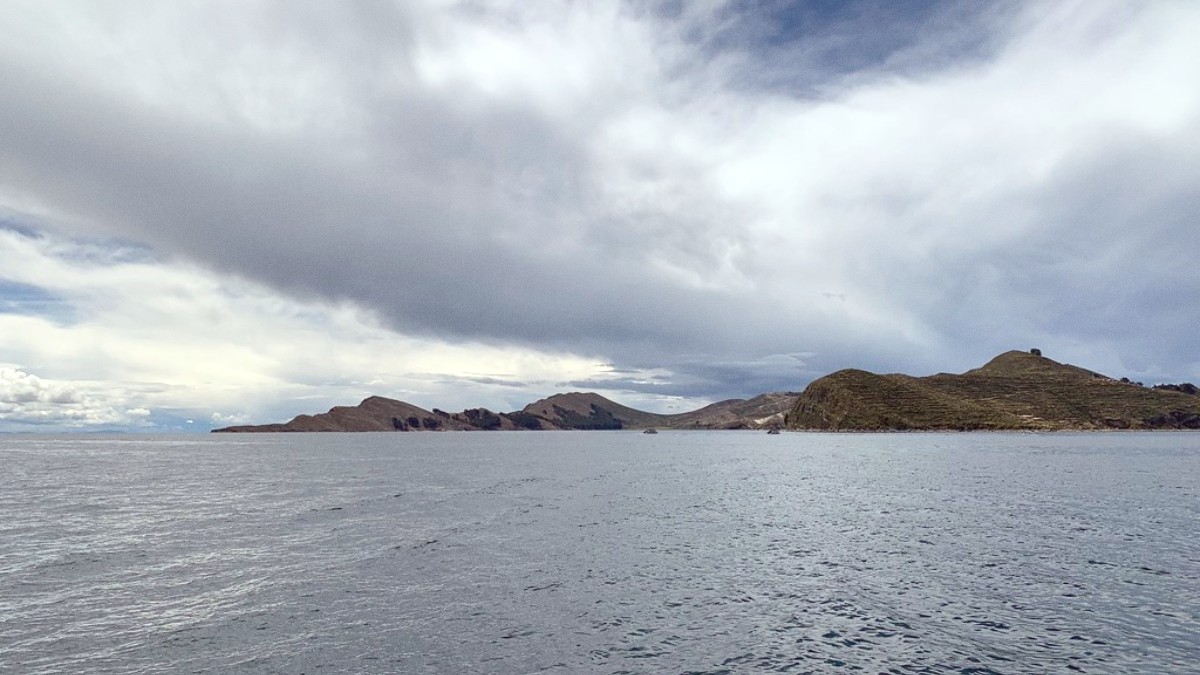
Bolivia
From Copacabana, Isla del Sol appears as a verdant, elongated mass rising from the deep blue waters. It measures roughly 9.6 kilometers, or 6 miles, in length and about 4.8 kilometers, or 3 miles, at its widest point. The island features a varied terrain. A central ridge runs its length, creating undulating hills and valleys that lead down to the lake's edge. Travelers often walk these paths, encountering small agricultural terraces, local homes, and scattered ancient ruins along the way.
The sun's intensity at this altitude is extreme. Apply Sunscreen with a high SPF frequently, wear a wide-brimmed hat, and use Sunglasses to protect yourself from strong UV rays.
The unique geography of Isla del Sol contributes directly to its allure, inviting quiet contemplation and active exploration.
Isla del Sol is a profound place in the spiritual and historical narratives of the Andean region. It is not just an island; it is a sacred ground, revered as the birthplace of the Inca sun god, Inti. They were sent by Inti to establish the Inca Empire and guide its people. This origin story imbues the island with a deep, enduring spiritual power, making it a pilgrimage site for centuries.
Before the Inca, other pre-Columbian cultures also recognized the island’s special qualities. The Tiwanaku civilization, a powerful empire that predated the Inca by several centuries, left its mark on Isla del Sol. Evidence of their presence, alongside that of the Inca, exists across the island in the form of various ruins, ceremonial sites, and ancient paths.
A well-preserved Inca palace on the southern end. Its intricate stonework and strategic location overlooking the lake hint at its royal or ceremonial purpose.
In the northern part of the island, a complex structure of carved stone rooms and passageways, believed to have been a ritualistic center or possibly a granary.
A colossal rock formation in the northern section, considered the very spot from which the sun and the first Incas emerged. The name "Titicaca" itself is believed to derive from this rock.
A three-spouted spring in the southern village of Yumani, said to grant eternal youth to those who drink from its waters. Its ancient steps, the Escalera del Inca, lead down to the water.
Descendants of these ancient civilizations continue to live on the island, maintaining traditions and a way of life that resonates with their ancestors’ reverence for the land and the lake.
When you visit Isla del Sol, you are not simply viewing ancient stones; you are walking through a living landscape, where history and myth intertwine. You experience a place where the past feels present, offering deep insights into the beliefs and customs of the Andean people.
You encounter remnants of stone structures, terraced fields, and sacred springs. Each site tells a part of the island’s story. Pilko Kaina, a well-preserved Inca palace on the southern end, demonstrates the advanced architectural skills of the Inca.
Its intricate stonework and strategic location overlooking the lake hint at its royal or ceremonial purpose. The Chincana, often called the "Labyrinth of the Inca," in the northern part of the island, is another compelling ruin. Its design suggests a sophisticated understanding of engineering and purpose.
This blend of breathtaking scenery and profound historical narrative creates a truly unique destination.
A quick overview of Isla del Sol helps you understand its appeal and practical aspects before your visit.
Isla del Sol sits within Lake Titicaca, Bolivia, a high-altitude lake. Accessible by boat from Copacabana, the journey takes approximately 1.5 to 2 hours.
Hiking, exploring Inca sites, cultural immersion with local Aymara communities, and quiet relaxation in a serene environment.
Pilko Kaina, Chincana, Inca Steps, Fountain of Youth, local Aymara life, and stunning lake and mountain panoramas.
Public boats depart regularly, usually twice a day. Once on the island, all movement is by foot. There are no vehicles, making it a pedestrian-only destination. Paths are often uneven and steep, requiring physical fitness.